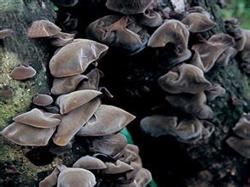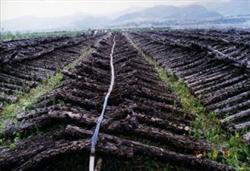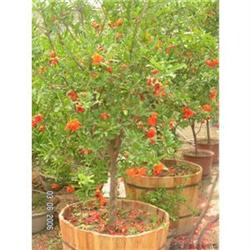Cultivation of Auricularia auricula in rice straw sand bed

Auricularia auricula is one of the favorite edible fungi. Cultivation of Auricularia auricula on straw sand bed has higher biotransformation rate and better economic benefit. A seasonal arrangement. Auricularia auricula strain has excellent characteristics of wide adaptability, strong resistance and high yield. It can be cultivated in indoor sand bed all year round, especially in summer and autumn. Select clean sterile river sand to dry, lay 10cm thick in the room, and lay two rows of pedestrian ear-picking walkways 80cm away from both sides of the wall with bricks; 3. Prepare culture materials. turning and drying the straw with golden color and no mildew for two days, crushing the straw into grass scraps, adding 2kg of compound fertilizer, 1kg of gypsum powder and 1kg of sucrose into each 100kg of straw scraps, stirring evenly, pouring 140kg of lime water with 0.5% into the straw scraps, stirring evenly, adjusting the water content to about 65%, stacking the straw scraps into trapezoidal piles with the height of 1m, the bottom width of 1.2m and unlimited length after mixing, covering the straw scraps, compacting and fermenting; After the temperature of the pile rises to 60 DEG C, the pile is turned over, the film is covered and compacted to continue fermentation, and the film is removed and bagged when the material temperature reaches more than 65 DEG C; 4. loading and inoculation. it is fil with polypropylene cylinder film with diameter of 17- 20cm, sealed with two end rings, sterilized for 4- 5h, inoculated with 40g at each end and 80g at both end in total; aft inoculation, it is placed in a clean room at 20-28 DEG C for shading culture, and that bag cylinder is removed after hyphae are full; 5. sand bed cultivation. planting the ear buds with bags removed on the riverbed at intervals of 10 cm, spraying water to moisten river sand, covering the ear buds in the daytime, removing the film at night, opening doors and windows, etc., increasing temperature difference to promote ear growth, removing the film after ear buds grow, spraying cold boiled water to gradually make the relative humidity of air reach 85-95%, keeping the temperature between 20 and 25 DEG C, opening doors and windows as much as possible along with ear bud differentiation and ear piece expansion, or exhausting air 2-3 times a day by an exhaust fan to increase air circulation; Harvest when ear piece 8 is ripe, thick and plump, and purple and bright; pull ear stick away from riverbed and change direction after harvesting (i.e., the ear is born with one end downward), replanted on the sand bed at an interval of 10cm, sprayed with water to moisten the river sand, and the ear stimulation management is the same as before; after the second tide ear is collected, the river sand with a thickness of 3cm is taken away from the surface of the bacterial bed, the ear stick is cut from the middle, the cut surface is laid on the sand bed with a thickness of 7cm without leaving a gap, the surface of the ear stick is covered with river sand with a thickness of 3cm, sprayed with water until the moisture is saturated, and the bed surface is covered with a layer of newspaper to stimulate the ear; after the ear bud extends out of the sand bed, the newspaper is removed, and the ear stimulation management is the same as before.
- Prev

Inoculation technique of Auricularia auricula
1. The fog irrigation facility is composed of dry, branch and wool high pressure polyethylene plastic pipe micro atomization nozzles and pipe fittings. The diameter of the main pipe is 40ml 50mm, the diameter of the branch pipe is 25mm 12mm, and the diameter of the capillary tube is 10mm 12mm. During installation, the water source of the main pipe is perpendicular to the branch pipe, the branch pipe is perpendicular to each ear trunk, and the capillary (usually 15.
- Next

Cultivation techniques of Paeonia suffruticosa
Peony pomegranate is one of the rare and precious varieties of pomegranate in China, which is called peony pomegranate because its flowers are as big as peony. Peony pomegranate is a new tree species which combines the advantages of peony and pomegranate. It has edible, ornamental, green value, not only can be planted in the field, but also for families, tourist resorts to cultivate, open.
Related
- Fuxing push coffee new agricultural production and marketing class: lack of small-scale processing plants
- Jujube rice field leisure farm deep ploughing Yilan for five years to create a space for organic food and play
- Nongyu Farm-A trial of organic papaya for brave women with advanced technology
- Four points for attention in the prevention and control of diseases and insect pests of edible fungi
- How to add nutrient solution to Edible Fungi
- Is there any good way to control edible fungus mites?
- Open Inoculation Technology of Edible Fungi
- Is there any clever way to use fertilizer for edible fungus in winter?
- What agents are used to kill the pathogens of edible fungi in the mushroom shed?
- Rapid drying of Edible Fungi

